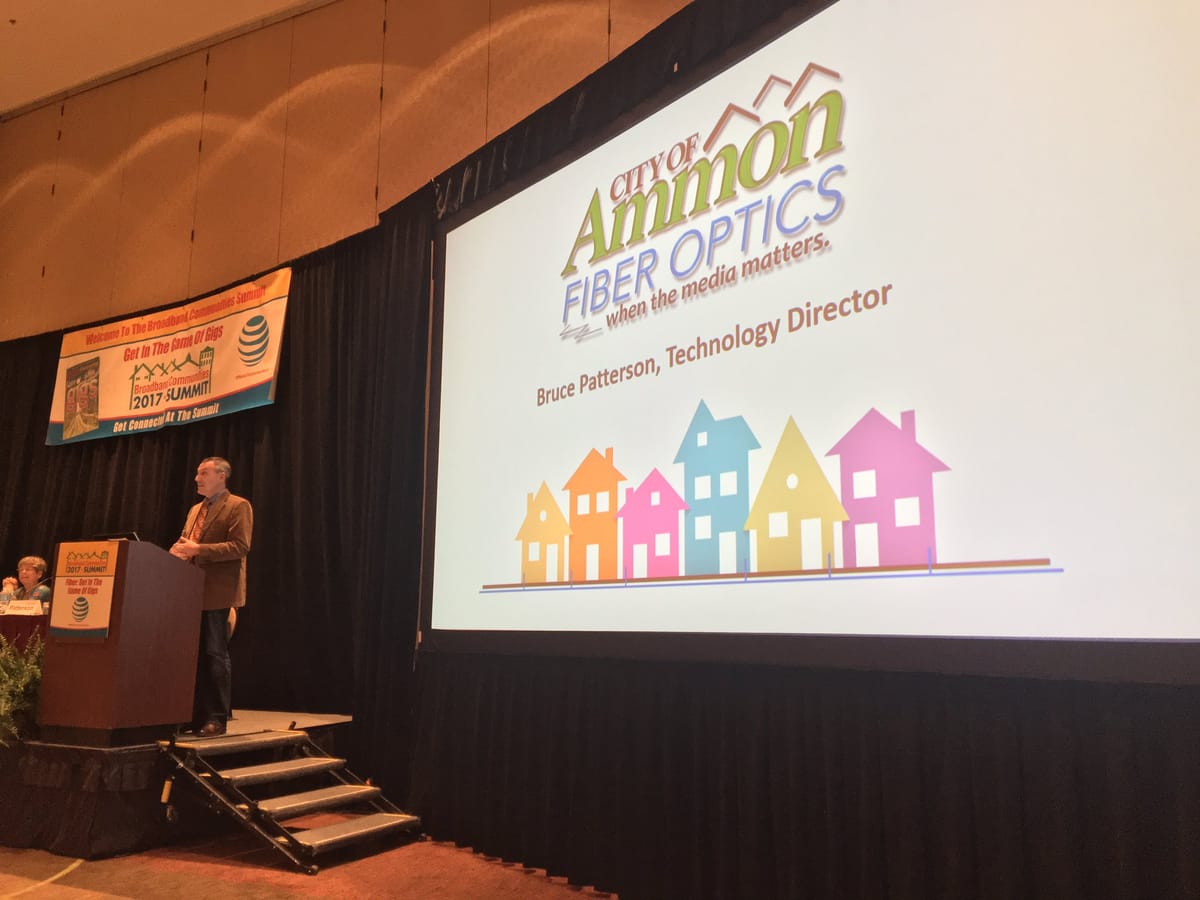Spotlight on Advantages of Open Access Networks at Broadband Communities Summit
Open access networks are becoming more real for gigabit connectivity in the United States.

DALLAS, May 5, 2017 – Open access networks are becoming more real for gigabit connectivity in the United States, according to panelists attending the Broadband Communities Summit here this week.
Sign up for Digital Infrastructure Investment 2024:

The conference was notable in having numerous, positive discussions of the “three-tiered” model: One entity owns the fiber infrastructure, a second entity operates the gigabit network, and a third entity sells retail internet access to customers.
Why split up ownership, network operations, and internet services?
Each of these three activities are fundamentally different. They are best served by different skill sets and different business models.
For example, financing fiber infrastructure can be realized more readily when it is understood as a long-term capital or real estate investment.
And network operations are utility-like. They are best served by government entities or by private-sector providers separate from actual internet service providers.
On such open access networks, there are generally multiple service providers offering a variety of packages of broadband services for business and retail customers.
Yet this concept of a three-tiered broadband network is still, panelists said, a bit of a novelty in the United States.
Unlike other places around the world, the vertically integrated giant can seem like the norm here. Incumbent communications companies generally own their own fiber, wireless and other assets. They operate their respective core network in their own proprietary fashion. And they try to provide customer service — internet connectivity, or the so-called “triple play,” or services like home security — to end users.
Recent marketplace developments have seen players like AT&T, Comcast, and Verizon Communications seeking to integrate even further. They want to own “content” and entertainment. This development is likely to prove a detour on the pathway to the future of advanced broadband.
Indeed, bundling and vertical control are a remnant of the pre-fiber world. Telephone companies built copper network for the single-purpose telephone — and discovered they could add internet through DSL. Cable companies strung co-axial wires to sell television — and then realized that cable modems could squeeze out bandwidth for broadband.
Fiber-optic communication, however, unleashes a multitude of services and applications. But this flourishing can only happen if innovators fix the business model problems that limit ownership of and access to fiber utilities.
Ammon’s ‘Broadband Improvement District’
Ammon, Idaho (pop. 14,685), is one of those innovators. At the summit this week, Technology Director Bruce Patterson unpacked the elements of its own three-tiered network.
Residents opting-in to a “broadband improvement district” become a part of the gigabit network and pay an additional $17 a month on their property bill, over 20 years, to cover the approximately $3,000 cost of fiber infrastructure, he said. Ammon then bills customers an additional $17 a month for network operations. And the ISPs offer their service on the network, generally for an additional $20 month.
Patterson spoke on a panel of the Rural Telecommunications Congress on “Financing the Last Mile with an Essential Services Approach,” and others. Ammon’s working network may counter arguments that open access can only work in a large-scale urban market. Yet on the same panel, Sue Inches of Maine discussed how, on the Cranberry Isles, a community desperate for broadband was only able to entice an ISP to serve the community if it could guarantee exclusivity.
The United States ‘is completely different’ from Sweden
Another global broadband innovator is VenturaNext. The company is a large operator of gigabit networks in Sweden, where open access is the norm. Nearly 20 years ago, municipalities began investing in bringing fiber to homes and multiple dwelling units. The company began by partnering with lower-profile ISPs, and then larger and more prominent ones. VenturaNext operated the network, but consumers purchased broadband from a multitude of choices.
Now the company is expanding outside of Sweden. “Our biggest market is South Africa, where we are redefining broadband,” said Senior Sales Manager Robert Gure.
“We have 25,000 homes connected, and an automated provisioning system that is built into the network,” said Gure. “Because of the efficiency of the network, we can make money in a low-ARPU environment,” he said, referring to Average Revenue per User.
American communications companies tend to regard ARPU as a holy-grail metric for success. Yet Gure noted, ironically: “We are here trying to learn how to get this to work in the U.S., where it is completely different.”
Rio Blanco, Bozeman, and Kitsap lead the way
Gure was speaking on a session discussing open access in Washington State, in Rio Blanco County, Colorado, and Bozeman, Montana. The session was optimistic and future-oriented, including rhetoric about how some ISPS “see the tides changing” and will eventually begin to use networks like the Kitsap Public Utility District’s, according to its superintendent of telecommunications Paul Avis.
Agreed Brit Fontenot, director of economic development for Bozeman: “The service providers are part of the solution to the problem. We need to make sure we are educating them on the value” in becoming ISPs on fiber utilities.
The Rio Blanco broadband project is also a three-tiered open access network. The county is the owner of the network, and it is offering fiber to the home in the cities of Meeker (pop. 2,429) and Rangely (pop. 5,297), plus fixed wireless services for rural residents. The county put out a request for proposals for a private company to operate the network under a contract. It includes a sharing of 60 percent of the system’s revenues with the county.
Blake Mobley, the project’s information technology director, cautioned against imposing a rigid definition upon the advanced and open networks. He called his network a “hybrid” variant.
“We are a modified form of open access [in that] we have selected two small wireless internet service providers” to offer retail services over the fiber network, said Mobley. Additional ISPs may be allowed on the network in the future, but for now access is limited to two providers.
“Otherwise, you run the risk of watering the market down so that none of them can be profitable,” he said.
Bozeman’s network, by contrast, hasn’t yet been constructed. But this open network has already attracted six ISPs willing to offer services. Unlike Rio Blanco, “our network is smaller, and our efforts are concentrated” on Bozeman itself, said Fontenot.
“The fact that six providers came in very early in the process demonstrates the long-term potential” within even in a small community, said Andrew Cohill, president and CEO of Design Nine, and the panel’s moderator. Cohill, who has worked on open access projects in Danville, Virginia, and Palm Coast, Florida, concluded that “there is no minimum scale for open access.”
Open access in the ‘middle mile’
Yet another entirely different session, on Thursday, centered on “History and Future of Open Access Networks in Michigan.” That session drilled into the efforts of the Merit Network, an open access research and educational network that provides “middle mile” connectivity, as well as a fiber to the home project in Holland, Michigan.
“We have six providers on our network today,” explained Pete Hoffswell, broadband service manager for Holland’s Board of Public Works. He also believed that other, more traditional ISPs “will come around and join our open access system.”
Open access for residential users in the U.S. is just beginning. But open access is much more prevalent on middle mile networks bringing backhaul connectivity to individual communities. This was encouraged by open access requirement in the American Recovery and Reinvestment Act’s Broadband Technology Opportunities Program.
“We’ve been operating a collaborative, resource-sharing network for 23 years, but not until BTOP did we realize that we were open access,” said Elwood Downing, vice president of business development for Merit Network. As more and more people realize that “the infrastructure is there,” open access is likely to continue to expand, he said.










Member discussion